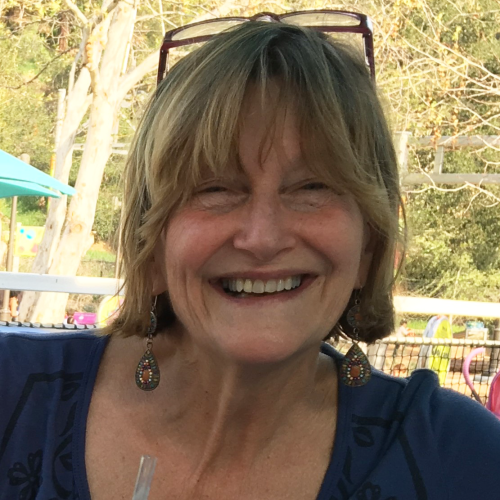Sending the Right Message
The ability of officials to clearly and credibly communicate during a pandemic can go a long way toward determining the success of containment and mitigation efforts, FSPH experts say.

IN ANY PUBLIC HEALTH EMERGENCY, conveying clear, accurate, and timely information to the affected population is important. But that information, along with the trustworthiness and credibility of the officials delivering it, is crucial during an emerging infectious disease outbreak, say two Fielding School experts in public health communication.
The high-stakes nature of public health crisis messaging is on full display in the COVID-19 pandemic, in which the population has been asked to make enormous sacrifices and change its behavior. These measures are taken for people to protect themselves and their loved ones, but also their community and the society at large by slowing the spread of a highly transmissible virus. In this case, the ability of public health leaders to communicate the necessary actions and to persuade individuals, families, and communities to take them can go a long way toward determining the success or failure of containment and mitigation efforts.
“Many public health disasters are local, such as an earthquake or a foodborne outbreak, and in those scenarios the people who are directly affected tend to be motivated to take what you’re saying seriously,” notes Deborah Glik, FSPH professor of community health sciences. “In this case, the problem is diffuse; it’s everywhere. You can’t see it, feel it, or touch it. In their daily lives, most people are focused on actions that benefit themselves and those close to them, but in this type of emergency we are also appealing to everyone’s sensibility about collective safety and well-being.”
Meeting the challenge, Glik says, requires a high level of credibility — a status earned by government and public health officials who exhibit empathy, openness, honesty, and dedication as well as competence and expertise.
Dr. Neal Baer, a television writer/producer and former FSPH faculty member who has studied how to reach popular audiences with health messages, says the early federal response to COVID-19 was hampered by mixed messages about the importance of protective measures such as physical distancing, as well as statements about aspects of the response, such as the availability of testing, that turned out to be false.
“Above all, you need accuracy and trust for public health messaging to be effective in a crisis,” Baer says. “We haven’t always seen that with our response to COVID-19, and that’s been a real problem. These inconsistencies and inaccuracies erode trust and make it more difficult to get people to take desired actions.”
Officials disseminating public health messages are doing so in a much different environment from even a decade ago, notes Glik, who has worked with local, state, and federal agencies on risk communication. While traditional approaches such as news conferences remain vital, the messengers also need to reach populations in nontraditional venues that have become information sources, including online engagement and social media.
Especially in the era of social media, it’s … much easier for misinformation to spread.
“The fact that a disaster or crisis is newsworthy means it’s not a problem for public health and health care agencies getting out messages,” Glik says. “But especially in the era of social media, it’s also much easier for misinformation to spread.” One public health lesson that evolved out of the aftermath of 9/11, she notes, is the importance of having a team dedicated to monitoring and countering misinformation. “That effort is even more critical today,” Glik says.
Beyond the content of written and verbal communications, Baer says it’s crucial for the officials delivering public health messages during a crisis to model the desired behaviors. “We know from research, for example, that what people see on television affects public health behavior,” he explains. “When teens see smoking on TV, they’re more likely to smoke. We don’t show people dying by suicide on television because we know that tends to increase suicidality.” Early on, Baer laments, White House Coronavirus Task Force briefings featured officials shaking hands and standing in close physical proximity to one another, sending the wrong message to viewers.
Baer notes that when delivered properly, public health communications can help to tamp down anxieties. “It’s always about the story,” he says. “People are moved by emotion, and panic is caused by uncertainty.”
Glik points out that although the COVID-19 pandemic may seem unprecedented in recent times, the basic tenets of effective communication in a public health emergency still apply. Those are outlined in the U.S. Centers for Disease Control and Prevention’s Crisis and Emergency Risk Communication (CERC) program. CERC outlines several types of narratives. What Glik refers to as the “a-list” messages involve basic information about survival: explaining the threat, who is at risk, and what people can do to prevent harm or seek assistance. Another set of messages lay out the public health actions being taken. Officials should discuss anticipated future steps and timelines, even if that includes an acknowledgement of what remains unknown, Glik says. She stresses that all of the key messages should be mapped out in advance so that every spokesperson is on the same page, and should be delivered with empathy, along with an acknowledgement of the fears and hardships that impacted populations are enduring.
At a time when so much attention is focused on public health, a pandemic or other crisis also presents an opportunity to educate the population about the need to adequately support public health in non-crisis times. “Most people don’t appreciate the importance of public health until there’s an emergency,” Baer says. “We need to capitalize on the renewed recognition of public health’s value to ensure that the field is sufficiently funded and the threats we identify are appropriately addressed.”
